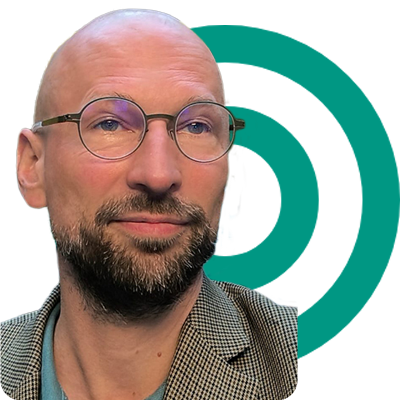Workshop 2 – 31 October 2025 (Leeuwen Room 2)
Organised by EAGE Special Interest Community on Geoscience Communication & Public Engagement
This workshop on geoscience communication and public engagement aims to enhance the ability of participants to convey complex geoscientific concepts through creative forms, including visual and non-verbal skills. Attendees will learn how different delivery styles influence the way geoscientific messages are received, and they will explore ways to engage and educate their audiences, making scientific information more accessible and engaging. The workshop includes hands-on activities, interactive exercises, and practical applications, ensuring participants leave with improved communication skills and best practices to convey their message with impact.
You will be required to sign in upon arrival and sign out upon departure.
The role of geoscientists in the energy conversation, with context and case studies.
Speakers:
Interactive engagement strategies, visual communications, and skill-building.
Speakers:
Visual storytelling and non-verbal skills, exploring the challenges and opportunities of communicating to broad audiences, including sonification.
Speakers:
Exploring the role of art in geoscience communication.
Speakers:
Group 1 and 2 have equal time for CCS and Geothermal programmes.
Preliminary programme Group 1
| Activity | Time | Duration | Location |
|---|---|---|---|
| Introduction welcoming guests and a short speech fromPanTerra | 10:00 - 10:15 | 0:15 | |
| CCS workshop | 10:15 - 11:45 | 01:30 | Conference Room 2 |
| General introduction to CCS and discussion of key risks. | 10:15 - 10:30 | 0:15 | Conference Room 2 |
| Break-up into groups of 3, core handling | 11:00 - 11:45 | 0:30 | Conference Room 2 |
| Group discussion of observations/interpretations | 11:00 - 11:45 | 0:45 | Conference Room 2 |
| Lunch | 11:45 - 12:15 | 00:30 | Canteen area |
| Lab Tour Group Split into two to be accommodated in the lab | 12:15 - 13:15 | 01:00 | Lab Downstairs |
| Geothermal Workshop | 13:15 - 14:45 | 01:30 | Conference Room 2 |
| Introduction to GT | 13:15 - 13:30 | 00:15 | Conference Room 2 |
| Breakup into groups, core handling | 13:30 - 14:00 | 00:30 | Conference Room 2 |
| Group discussion, comparison to CCS | 14:00 - 14:45 | 00:45 | Conference Room 2 |
| Closeout | 14:45 - 15:00 | 00:15 | Conference Room 2 |
Preliminary programme Group 2
| Activity | Time | Duration | Location |
|---|---|---|---|
| Introduction welcoming guests and short PanTerra speech | 10:00 - 10:15 | 0:15 | |
| Lab tour Group split in 2 to be accommodated in the lab | 10:15 - 11:15 | 01:00 | Conference Room 3 |
| Geothermal workshop | 11:15 - 12:45 | 01:30 | |
| Introduction to geothermal, and discussion of key risks. Introduction from EBN on SCAN project. | 11:15 - 11:30 | 0:15 | Conference Room 3 |
| Breakup in groups of 3, core handling | 00:00 - 00:00 | 0:30 | Conference Room 3 |
| Group discussion on observations/interpretations | 12:00 - 12:45 | 00:45 | Conference Room 3 |
| Lunch | 12:45 - 13:15 | 00:30 | Canteen Area |
| CCS workshop | 13:15 - 14:45 | 1:30 | Conference Room 3 |
| Introduction | 13:15 - 13:30 | 00:15 | Conference Room 3 |
| Breakup, core handling | 13:30 - 14:00 | 00:30 | Conference Room 3 |
| Group discussion, comparison to CCS | 14:00 - 14:45 | 00:45 | Conference Room 3 |
| Closeout | 14:45 - 15:00 | 00:15 | Conference Room 3 |
EAGE is the largest global community of research and industry geo-professionals dedicated to supporting a multi-disciplinary approach to the investigation of the Earth’s subsurface.
for GET2025

SLB
Dariusz obtained his MSc at Wroclaw University in Poland in 2002.
After his PhD (2007) in geology, gas isotope geochemistry and microbiology at the Indiana University, Bloomington, he has worked in Subsurface Technology at ConocoPhillips for three years followed by one year of consulting (Dariusz BioGeoChem) working on petroleum systems and subsurface biomethane stimulation.
In 2012 he has joined SLB and since then has been developing interpretation workflowsand answer products for surface formation evaluation (mud gas and cuttings logging). Since couple of years his works involves H2 and helium logging and exploration, for which the global activity is rapidly growing.
This topic also brings ideas of stimulated natural H2 in the subsurface, which brings together geological and fluid geochemistry knowledge to a new level of collaboration among academic and industrial communities.
Dariusz is very active within the geochemistry community, with multiple peer-reviewed papers and chapters, numerous conference-related activities, journal editorships, and intellectual property publications.

SLB
Dariusz obtained his MSc at Wroclaw University in Poland in 2002.
After his PhD (2007) in geology, gas isotope geochemistry and microbiology at the Indiana University, Bloomington, he has worked in Subsurface Technology at ConocoPhillips for three years followed by one year of consulting (Dariusz BioGeoChem) working on petroleum systems and subsurface biomethane stimulation.
In 2012 he has joined SLB and since then has been developing interpretation workflowsand answer products for surface formation evaluation (mud gas and cuttings logging). Since couple of years his works involves H2 and helium logging and exploration, for which the global activity is rapidly growing.
This topic also brings ideas of stimulated natural H2 in the subsurface, which brings together geological and fluid geochemistry knowledge to a new level of collaboration among academic and industrial communities.
Dariusz is very active within the geochemistry community, with multiple peer-reviewed papers and chapters, numerous conference-related activities, journal editorships, and intellectual property publications.
I’m your AI-assistant AT GET 2025
As your supercharged search engine, I’ll help you browse the programme, explore sessions and speakers, plan your schedule, get quick answers, and stay updated.

COO, XGS Energy
Co-chair Geothermal Energy Conference
As the Chief Operating Officer at XGS Energy, Dr. Ghazal Izadi plays a pivotal role in driving global operations, spearheading technology advancement, and company expansion efforts. With over a decade of experience, she is a driving force at XGS Energy. Her expertise and leadership are deeply rooted in creating and delivering technology-centric business solutions, marked by exceptional client service.
Before joining XGS Energy in 2022, Dr. Izadi held key technical positions at Baker Hughes, making significant contributions in both Unconventional oil and gas as well as Geothermal domains. Her responsibilities encompassed overseeing reservoir technical services across North and Latin America, Middle East, and APAC regions. This rich background reflects her commitment to a holistic approach, spanning from subsurface insights to well construction and tailored surface geothermal facility design. Dr. Izadi earned her Ph.D. from Penn State University, specializing in a diverse range of areas such as computational geomechanics, fluid transport in fractured and porous media, applied rock mechanics, and Advanced/Enhanced Geothermal Systems. Her profound expertise extends to authoring or co authoring more than 40 technical papers, further cementing her reputation as a notable figure in the field.
Head of Geosolutions at Geocento
Co-chair Geothermal Energy Conference